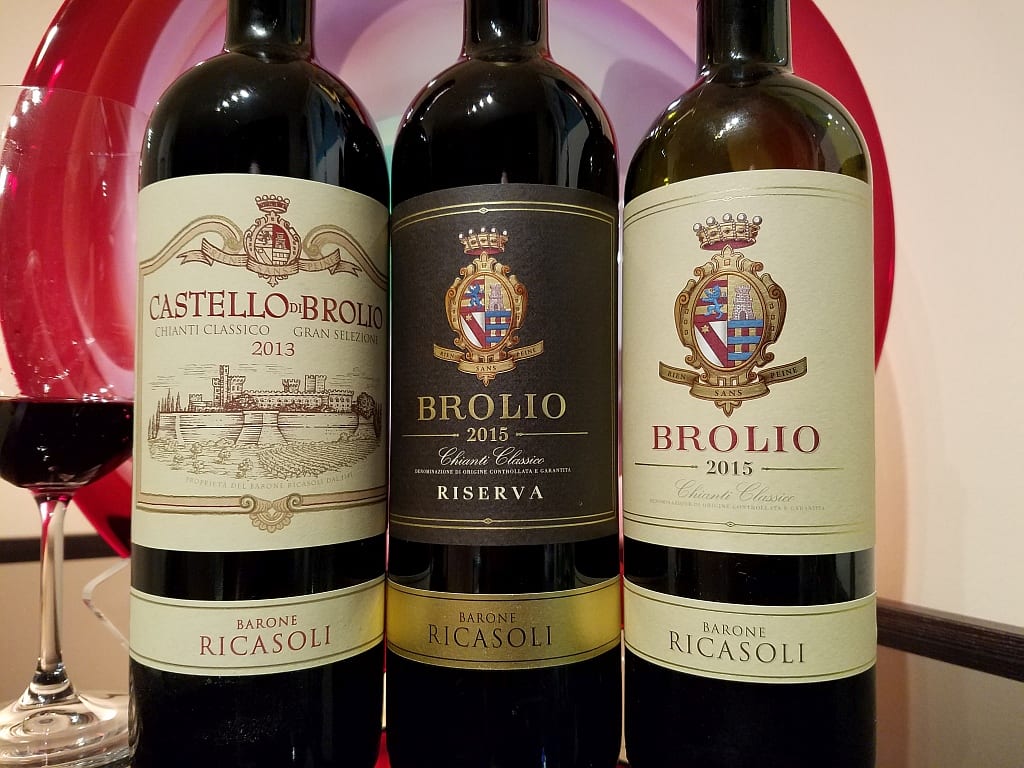No wine area in Italy has more history and historical figures than Chianti Classico. Situated between Florence and Siena, it was fought over for centuries, ruled by the Medicis, and was the home of Bettino Ricasoli, the 27th Baron of Castello di Brolio. It was the Baron who united Tuscany with Piedmont, then led the unification of Italy and became the country’s second prime minister. He also made wine at his family’s estate and created the regulation for Chianti Classico’s blend.
Castello di Brolio is located in Gaiole, which, along with Castellina and Radda, was one of the three villages that formed the lega del Chianti (League of Chianti) in 1716 to produce and promote the local wine. Four years later, Cosimo III de’Medici, Grand Duke of Tuscany issued an edict that the village of Greve and its northern hillside would join the lega del Chianti as the only official producers of Chianti. The Medici definition lasted until 1932 when Mussolini expanded the Chianti zone
Written records link the Ricasolis and wine to Castello di Brolio in 1141. Fast forward to 1872 when Baron Bettino Ricasoli wrote the recipe from which modern Chianti Classico is derived: 70% sangiovese, 15% each canaiolo (red) and malvasia and/or trebbiano (white). This would remain the blend even as—or was the cause of—Chianti Classico’s degrading into a light, vacuous wine.
In 1995, the degradation ended with the banning of white grapes, and sangiovese elevated to a minimum 80%, with the remaining 20% being canaiolo or cabernet sauvignon, merlot or syrah. Producers were also given the option of a 100% sangiovese Chianti Classico.
During the 20th century, Ricasoli’s wealth diminished causing Bettino, the 31st Baron, to sell the Brolio name and winery in the 1970s to the international beverage conglomerate Seagram. It passed through two more corporate ownerships and by the time the musical chairs stopped, Brolio’s name was worthless, which, ironically allowed Bettino to repurchase the name and winery (he never sold the 600-acre estate with its vineyards).
Now the owner of a nearly-bankrupt wine business, Baron Bettino reached out to his son Francesco (the 32nd Baron, if you’re counting), who was a successful photographer in Florence, as well as lifelong friends and owners in the wine business. The father and son climbed out of the financial hole before Bettino died in 2009. Today the former photographer continues the line of Baron Ricasolis running the estate, and producing these well-made wines.
The blend of 80% sangiovese and approximately 15% merlot and 5% cabernet sauvignon from Ricasoli’s estate vineyard in Gaiole produced the 2015 Baron Ricasoli Brolio Chianti Classico with bright cherry aroma and flavor. Under it is a mild vanilla accent from nine months of barrel aging, and its medium body holds soft tannins, balancing the red fruit. I enjoyed it with a sweet (no red pepper flakes) fennel pork sausage in a homemade tomato sauce. 90 points. Priced from $16 to $24.
The 2015 Baron Ricasoli Brolio Chianti Classico Riserva blend is the same as the nonriserva, but spends 18 months in barrels, some new and others used once. It’s bigger and richer than the nonriserva and with more black-cherry likeness and greater vanilla input. The vineyards’ minerality and tannic structure are evident, along with a long, pleasing finish. 92 points. Retail prices range from $23 to $35.
In 2014, a new classification, Gran Selezione, was created for Chianti Classico wines. It requires 30 months of aging versus riserva’s 24 months, and grapes must be estate grown or from a contracted vineyard. The Chianti Classico Consortium promotes this new regulation under the banner of better quality and a guarantee for consumers. But is it?
There is no rule that says estate-grown grapes are ipso facto better than purchased grapes, nor is 30 months aging in-and-of-itself better than 24 months. That said, I think it is beneficial to have a category that prevents negociant or international wine corporations from buying bulk wine and slapping a Gran Selezione label on it. But there is nothing to stop a winery from aging what was its estate-grown riserva wine for another six months and labeling it Gran Selezione and charge more for it.
With those thoughts, I tasted the 2013 Baron Ricasoli Chianti Classico Gran Selezione. Since this is a new category, the 2013 wine would have been classified a riserva, so the only difference is the additional six months of aging. It has a pronounced sangiovese nose of roses, red berries and soy with delicious flavors of blackcherry, toasted oak and dried oregano supported by gravely, dusty tannins that carries this full-bodied wine to a long, fruit-flavored finish. 94 points. Retail prices range from $50 to $72.
If there is a justification for the Gran Selezione category, it is new wines like the 2015 Baron Ricasoli Colledila Chianti Classico Gran Selezione. Made from only sangiovese planted in a rocky, calcareous clay soil vineyard on a south- facing hillside 850 to 1,000 feet high, the wine displays the ripe fruit of the excellent 2015 vintage. Intense aromas of black cherry, smoke and roses is matched by the red plum, black cherry and earthy flavors. A line of minerality brings structure and length with a harmonious finish. Very well made. 94 Points. Retail prices range from $50 to $78.
From this American’s view, it’s astounding to think that the Ricasolis will own Castello di Barolo for 900 years come 2041. My first visit to the castle was not long after Barons Bettino and Francesco reclaimed the Brolio name and winery in 1993. For the first decade or so, they made over-oaked New World-influenced wine (I suppose thinking that was the style that would get them sales and cash flow). Eventually, that was tamed and more classical, balanced Brolio wines appeared. The current wines show that Francesco has mastered the move from behind the camera lens to the vineyard and wine cellar. This is my snap shot of his successful transition.
Photos by John Foy










Leave A Comment